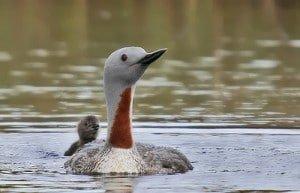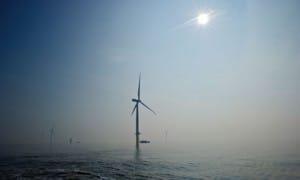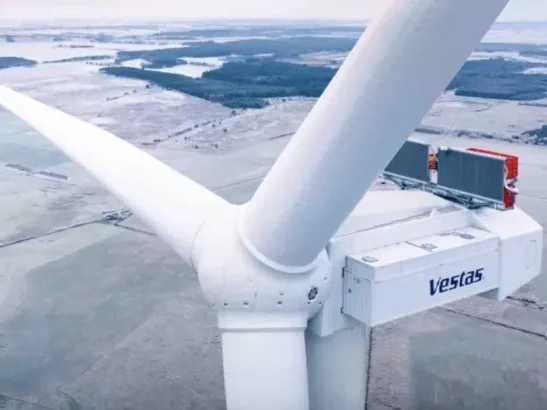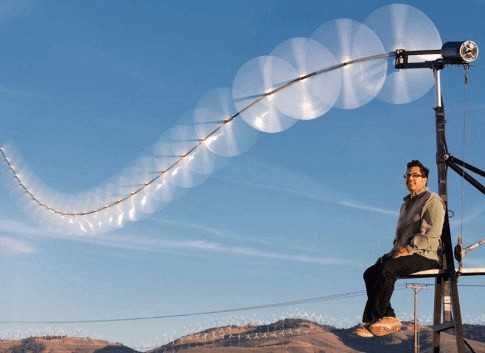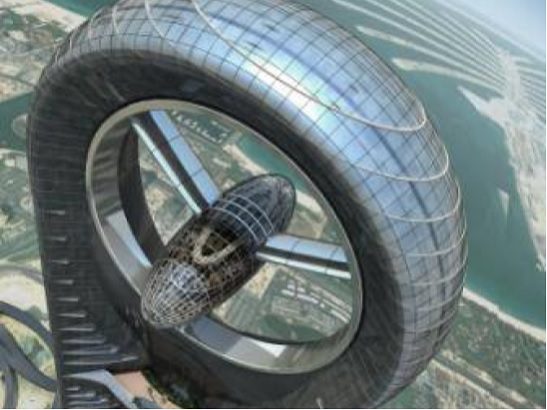“London Pride”, the London Array offshore wind farm, situated just off the Kent coastline, South East England, has begun operations, albeit at a modest level. The first one of 175 wind turbines has begun generating energy and supplying it to the UK national grid.
Richard Rigg, London Array Project Director, noted the most recent milestone being reached successfully. This was the installation of the two electrical substations that are used to convert the 33kV power generated by the Siemens wind turbines, to 150kV that is sent along the cables to the onshore substation. They were both delivered and installed on time, on budget and went into operation without any hitches. Given that everything in the London Array is watched and commented upon by locals and by the pro and anti wind lobby, it’s important that everything goes smoothly. Simply put, the project is always under the microscope.
151 turbines have already been installed since construction began in March 2011 and when the first phase is completed by the end of the year, the 630-megawatt scheme will be the largest offshore windfarm in the world. The second phase will add enough turbines to bring the total capacity of the windfarm to 870MW. The plans have had to be resubmitted with a reduction in the area the turbines would cover following concerns the scheme would hit the population of Red Throated Divers that inhabit the estuary.
Richard Rigg said developers Dong Energy, E.ON and Masdar have been working with the RSPB and Natural England to collect and analyse the bird population for the last six years. As a result they are convinced the 240MW extension could go ahead safely and have submitted a proposal to the Department of Energy Climate Change (DECC) and the Marine Management Organisation (MMO) seeking approval for the next phase of construction. These studies have indicated that the SPA (Special Protected Area) in which the wind farm sits and will not adversely affect the population of Red Throated Divers.”
Benj Sykes, wind UK country manager at Dong Energy, who have a large stake in the project said: “Being able to efficiently develop large offshore windfarms and harvest the scale advantages in both construction and operation is an important element in our continuous efforts to bring down the costs of energy of offshore wind.”
Tony Cocker, chief executive of E.ON UK, who also have a large stake in the london Array, said: “We firmly believe that electricity from renewable sources has a vital part to play in helping us deliver energy in a way that is sustainable, affordable and secure and this is why we are aiming to reduce the costs of offshore wind by 40% by 2015.”
The proposal for Phase 2 would cover an area of over 40 square kilometres and have the potential to produce enough renewable energy to meet the annual electricity needs of over 180,000 UK homes.
London Array refused to speculate on when the wind farm would be fully operational, although it is widely assumed that if consent is granted the project should be up and running by the end of 2020 and capable of powering 650,000 homes in total. Many people in the area and indeed across the whole UK are rightly proud of the London Array. Many see it as a blueprint for the way large wind farms should be planned, constructed and commissioned, because of the detailed level of consultation and the care and consideration given to not only the local wildlife, but to the health and safety of those involved in creating the London Array.
Join in the pride for London Pride!

